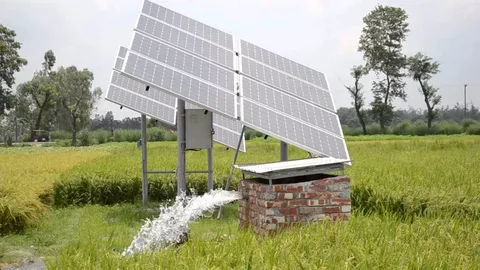| Empowering Rural India with Solar-Powered Irrigation |
Introduction
The India Solar Pump Market is experiencing remarkable growth, fueled by the government’s focus on renewable energy adoption and sustainable agricultural practices. With agriculture being the backbone of India’s economy, solar-powered irrigation systems are emerging as a clean, cost-effective, and reliable alternative to conventional diesel or electric pumps. This market aligns closely with India’s ambitious renewable energy targets and rural electrification goals, driving energy access and reducing farmers’ dependency on fossil fuels.
Market Drivers
The primary driver is the strong government support through schemes like the Pradhan Mantri Kisan Urja Suraksha Evam Utthaan Mahabhiyan (PM-KUSUM), which aims to install millions of solar pumps nationwide. Rising diesel prices and erratic power supply in rural areas further accelerate the transition toward solar-powered irrigation. Additionally, technological advancements in solar PV modules, coupled with falling installation costs, are making solar pumps more accessible. Increasing awareness among farmers about long-term cost savings and environmental benefits is also boosting adoption.
Market Challenges
High initial investment costs remain a major challenge, especially for small-scale farmers. Despite subsidies, upfront expenses often discourage widespread adoption. Maintenance and availability of spare parts in remote areas also pose difficulties. Moreover, the lack of trained technicians and proper system monitoring can lead to performance inefficiencies. Financing barriers, particularly for farmers without collateral or formal credit history, continue to limit market penetration. Seasonal dependency of irrigation demand and uneven solar radiation across regions also impact overall efficiency.
Opportunities
There is significant opportunity in integrating smart and IoT-based monitoring systems into solar pumps, enabling predictive maintenance and real-time performance tracking. The development of hybrid solar-diesel pumps can ensure reliability even in low sunlight conditions. Private sector participation and public-private partnerships (PPP) are expanding financing options and infrastructure support. Export potential for Indian-manufactured solar pumps is also rising, with neighboring countries seeking cost-effective sustainable irrigation solutions. Additionally, battery-integrated solar pumps are gaining attention for off-grid regions.
Regional Insights
States like Rajasthan, Maharashtra, Madhya Pradesh, Uttar Pradesh, and Gujarat are at the forefront of solar pump deployment due to strong solar potential and supportive state-level incentives. Southern states like Tamil Nadu and Karnataka are emphasizing solar water pumping for both irrigation and drinking water applications. Eastern regions, where grid access is limited, are emerging as new growth territories for decentralized solar pump systems.
Future Outlook
The India Solar Pump Market is projected to expand rapidly as solar technology costs continue to fall and awareness grows among rural communities. Integration with digital technologies, efficient financing mechanisms, and robust after-sales service networks will be key to sustaining growth. With India’s vision to achieve energy independence and promote sustainable agriculture, solar pumps will play a critical role in the country’s renewable energy ecosystem.
Conclusion
India’s solar pump revolution is driving a sustainable agricultural transformation. Supported by government initiatives, declining costs, and rural innovation, solar pumps are set to become a mainstream irrigation solution across the nation. Their contribution to clean energy, cost savings, and rural empowerment marks a significant stride toward India’s renewable future.
